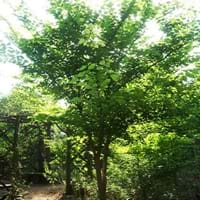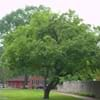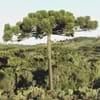Life Span
Perennial
Perennial
Type
Tree
Flowering Plants, Fruits, Trees
Origin
North America, Northeastern United States, Mid-Atlantic United States, North-Central United States, Central United States, South-Central United States, Canada
Central Asia
Types
Not Available
Aceymac apple, Bailey Sweet apple, Dabinett apple, Nehou apple
Number of Varieties
Not Available
Habitat
Woodland Garden Canopy
Hillside
USDA Hardiness Zone
3-11
5-8
Sunset Zone
Not Available
A1, A2, A3, 8, 9, 10, 11, 12, 13, 14, 15, 16, 17, 18, 19, 20, 21, 22, 23, 24
Habit
Upright/Erect
Oval or Rounded
Minimum Width
Not Available
Flower Color
Tan, Sandy Brown
White
Flower Color Modifier
Bicolor
Not Available
Fruit Color
Green, Sandy Brown
Green, Red
Leaf Color in Spring
Green
Dark Green
Leaf Color in Summer
Green, Dark Green
Green
Leaf Color in Fall
Yellow, Green
Brown, Green, Light Yellow
Leaf Color in Winter
Not Available
Not Available
Leaf Shape
oblong or obovate
Oblong
Plant Season
Not Available
Spring
Sunlight
Full Sun, Partial Sun, Partial shade
Full Sun, Partial shade
Growth Rate
Medium
Medium
Type of Soil
Clay, Loam, Sand
Loamy
The pH of Soil
Neutral, Alkaline
Neutral
Soil Drainage
Average
Well drained
Bloom Time
Early Spring, Spring
Fall, Summer
Tolerances
Not Available
Drought
Where to Plant?
Ground
Ground
How to Plant?
Seedlings
Grafting, Seedlings, Transplanting
Plant Maintenance
Medium
Medium
Watering Requirements
Average Water Needs
Medium
In Summer
Lots of watering
Lots of watering
In Spring
Moderate
Moderate
In Winter
Average Water
Average Water
Soil pH
Neutral, Alkaline
Neutral
Soil Type
Clay, Loam, Sand
Loamy
Soil Drainage Capacity
Average
Well drained
Sun Exposure
Full Sun, Partial Sun, Partial shade
Full Sun, Partial shade
Pruning
Remove damaged leaves, Remove dead branches, Remove dead leaves
Prune when plant is dormant, Remove dead or diseased plant parts
Fertilizers
Any balanced general purpose fertilizer
All-Purpose Liquid Fertilizer
Pests and Diseases
Blackspot mold
Aphids, Canker, Caterpillars, Powdery mildew, Root rot
Plant Tolerance
Drought
Drought
Flowers
Insignificant
Yes
Flower Petal Number
Not Available
Single
Showy Foliage
Insignificant
No
Foliage Texture
Medium
Medium
Foliage Sheen
Matte
Matte
Attracts
Beetles, Birds
Birds
Allergy
Miscarriage, Rash
Mouth itching, Throat itching
Aesthetic Uses
Not Used For Aesthetic Purpose
Not Used For Aesthetic Purpose
Beauty Benefits
Beautiful Skin, Heals Damaged Hair, Strong, beautiful hair
Not Available
Environmental Uses
Air purification
Air purification
Medicinal Uses
Demulcent, Diuretic, Expectorant, Nutritive
Cancer, constipation, Diabetes, Diarrhea, Dysentry, Fever, Heart problems, Tooth ache
Part of Plant Used
Fruits, Inner Bark, Leaves
Fruits
Other Uses
Chewed as a thirst quencher, Tea-like beverage can be brewed, Used as a thickener in soups, Used to make a twine
Used As Food, Wood is used for making furniture
Used As Indoor Plant
No
No
Used As Outdoor Plant
Yes
Yes
Garden Design
Shade Trees
Fruit / Fruit Tree, Shade Trees, Showy Tree
Botanical Name
ULMUS rubra
Malus domestica
Common Name
Slippery Elm
Apple Tree
In Hindi
Slippery Elm
सेब का वृक्ष
In German
Rotulme
Apfelbaum
In French
Slippery Elm
Pommier
In Spanish
olmo resbaladizo
Manzano
In Greek
Slippery Elm
μηλιά
In Portuguese
Slippery Elm
Macieira
In Polish
Slippery Elm
jabłoń
In Latin
Lubricus Elm
Arbore
Phylum
Magnoliophyta
Magnoliophyta
Class
Magnoliopsida
Magnoliopsida
Clade
Angiosperms, Eudicots, Rosids
Angiosperms, Eudicots, Rosids
Tribe
Not Available
Not Available
Subfamily
Not Available
Not Available
Number of Species
Not Available
Not Available
Season and Care of Slippery Elm and Apple Tree
Season and care of Slippery Elm and Apple Tree is important to know. While considering everything about Slippery Elm and Apple Tree Care, growing season is an essential factor. Slippery Elm season is Not Available and Apple Tree season is Not Available. The type of soil for Slippery Elm is Clay, Loam, Sand and for Apple Tree is Loamy while the PH of soil for Slippery Elm is Neutral, Alkaline and for Apple Tree is Neutral.
Slippery Elm and Apple Tree Physical Information
Slippery Elm and Apple Tree physical information is very important for comparison. Slippery Elm height is 1,830.00 cm and width Not Available whereas Apple Tree height is 25.00 cm and width 20.00 cm. The color specification of Slippery Elm and Apple Tree are as follows:
Slippery Elm flower color: Tan and Sandy Brown
Slippery Elm leaf color: Green
Apple Tree flower color: White
- Apple Tree leaf color: Dark Green
Care of Slippery Elm and Apple Tree
Care of Slippery Elm and Apple Tree include pruning, fertilizers, watering etc. Slippery Elm pruning is done Remove damaged leaves, Remove dead branches and Remove dead leaves and Apple Tree pruning is done Prune when plant is dormant and Remove dead or diseased plant parts. In summer Slippery Elm needs Lots of watering and in winter, it needs Average Water. Whereas, in summer Apple Tree needs Lots of watering and in winter, it needs Average Water.





